ZAMRUD KHATULISTIWA 2012
PAPER CRAFT POSTER
Creative Director Yohanes Raymond
Illustration & Designer Viona Paramita
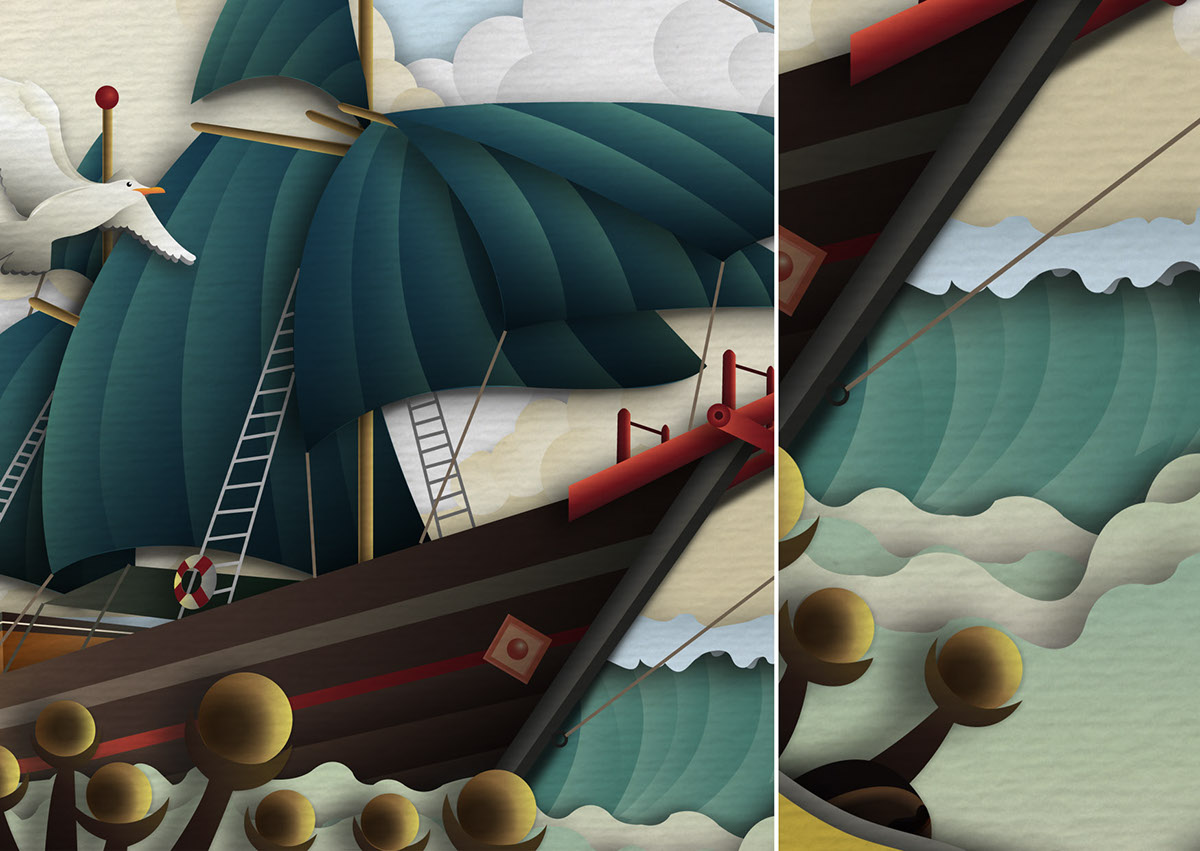
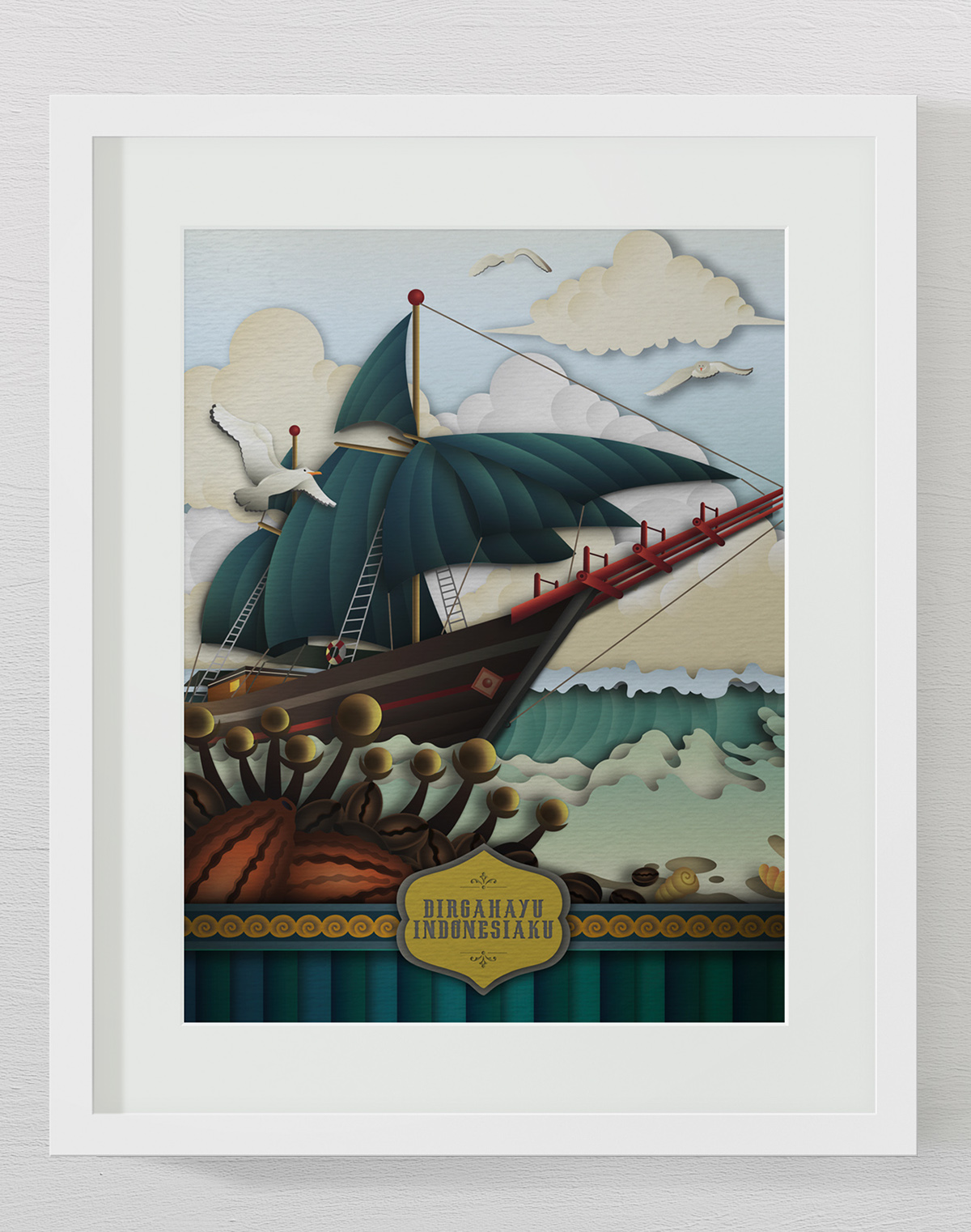
The pinisi or phinisi is a traditional Indonesian two-masted sailing ship. It was mainly built by the Konjo tribe, a sub-ethnic group of Bugis-Makassar mostly residents at the Bulukumba regency of South Sulawesi but was and and still is used widely by the Buginese and Makassarese, mostly for transportation and agricultural purpose
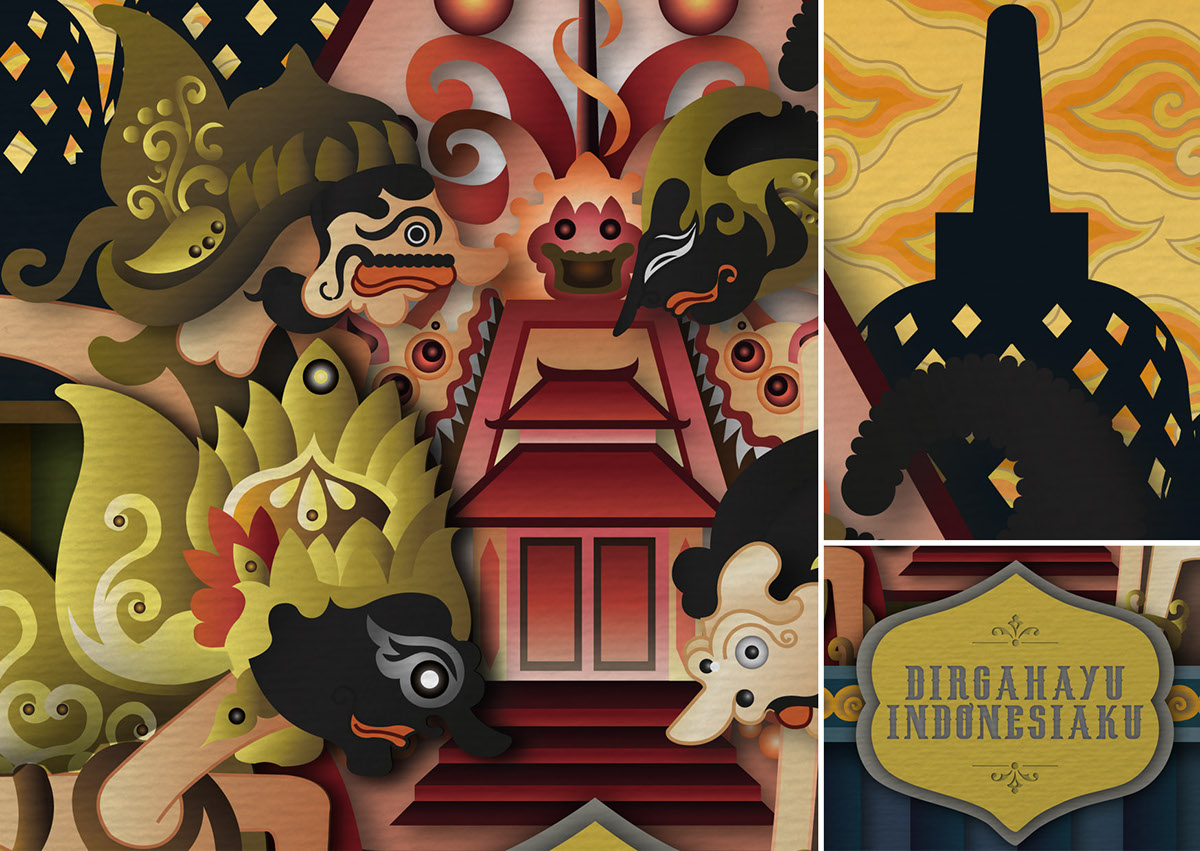

Wayang Kulit
Wayang is a Javanese word for particular kinds of theatre. When the term is used to refer to kinds of puppet theatre, sometimes the puppet itself is referred to as wayang. Performances of shadow puppet theatre are accompanied by a gamelan orchestra in Java, and by gender wayang in Bali.
UNESCO designated wayang kulit, a shadow puppet theatre and the best known of the Indonesian wayang, as a Masterpiece of Oral and Intangible Heritage of Humanity on 7 November 2003. In return for the acknowledgment, UNESCO required Indonesians to preserve their heritage
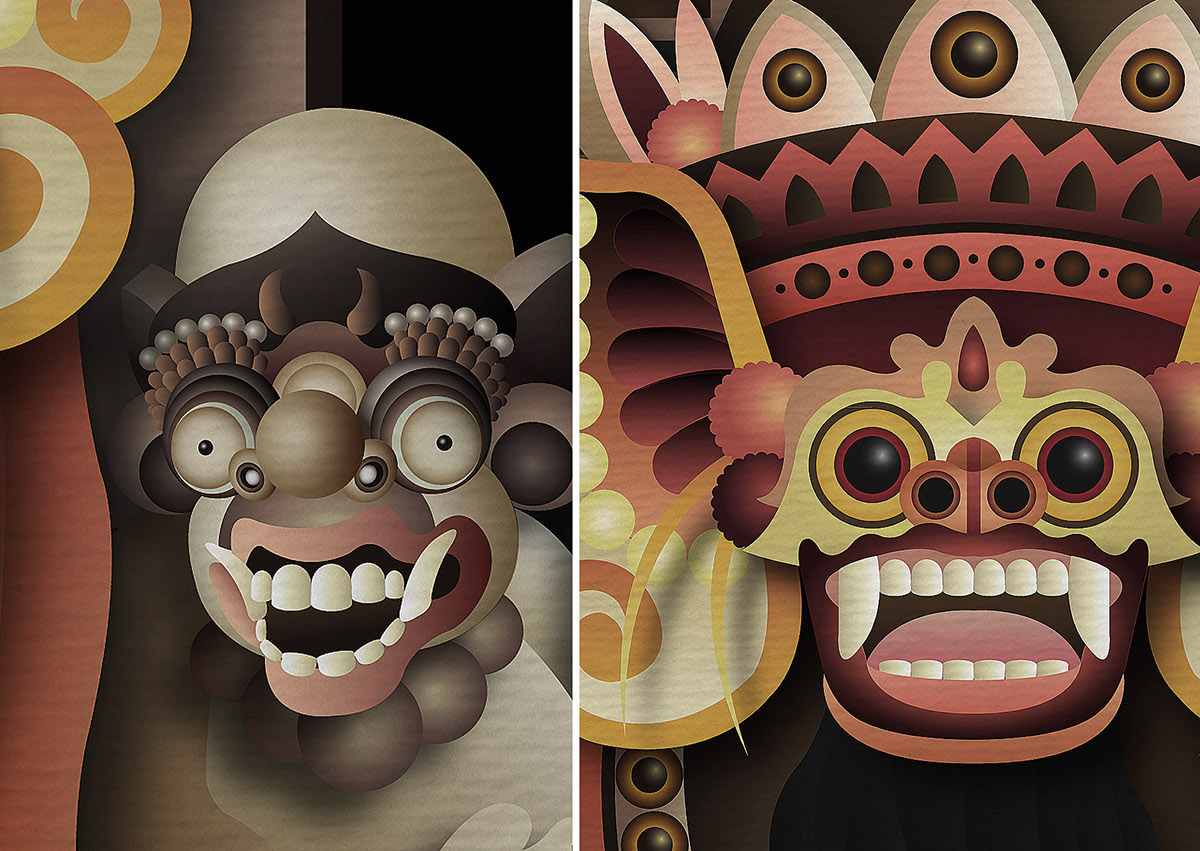
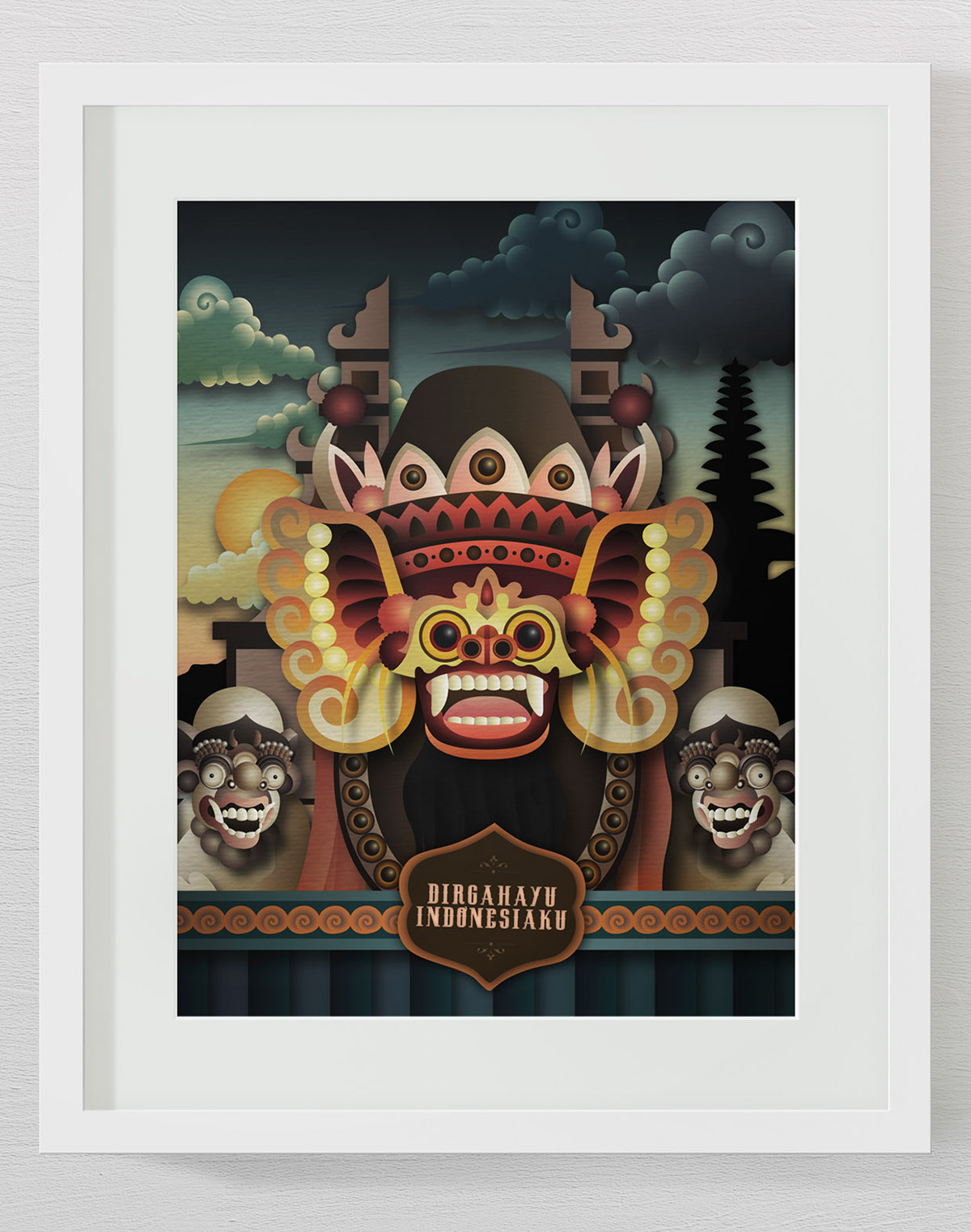
The Barong Dance of Bali
Barong is probably the most well known dance. It is also another story telling dance, narrating the fight between good and evil. This dance is the classic example of Balinese way of acting out mythology, resulting in myth and history being blended into one reality.
The story goes that Rangda, the mother of Erlangga, the King of Bali in the tenth century, was condemned by Erlangga's father because she practiced black magic. After she became a widow, she summoned all the evil spirits in the jungle, the leaks and the demons, to come after Erlangga. A fight occurred, but she and her black magic troops were too strong that Erlangga had to ask for the help of Barong. Barong came with Erlangga's soldiers, and fight ensued. Rangda casted a spell that made Erlangga soldiers all wanted to kill themselves, pointing their poisoned keris into their own stomachs and chests. Barong casted a spell that turned their body resistant to the sharp keris. At the end, Barong won, and Rangda ran away.
Somebody can die or get seriously injured in a Barong dance. It is said that if Rangda's spell is too strong, a weak soldier may not be able to resist it, even with the help of Barong. He may end up hurting himself with his own keris.
The masks of Barong and Rangda are considered sacred items, and before they are brought out, a priest must be present to offer blessings by sprinkling them with holy water taken from Mount Agung, and offerrings must be presented.
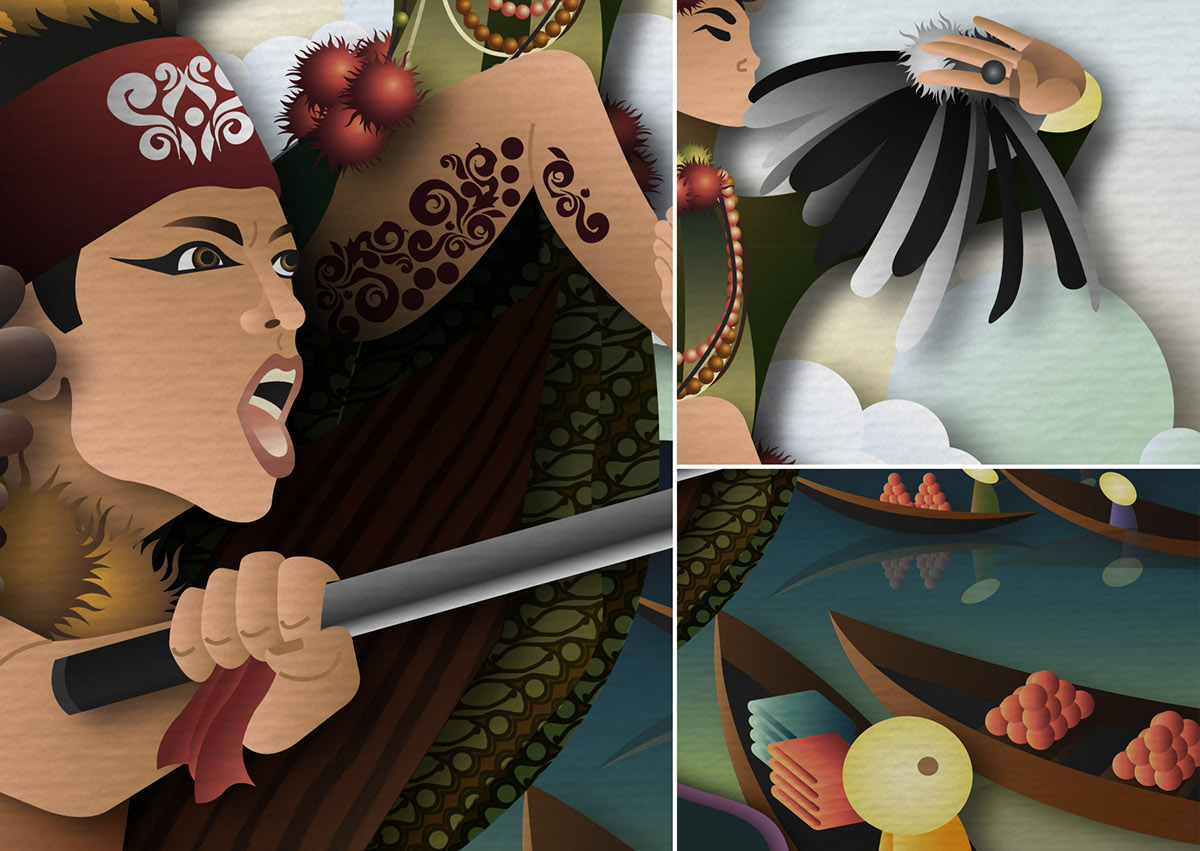
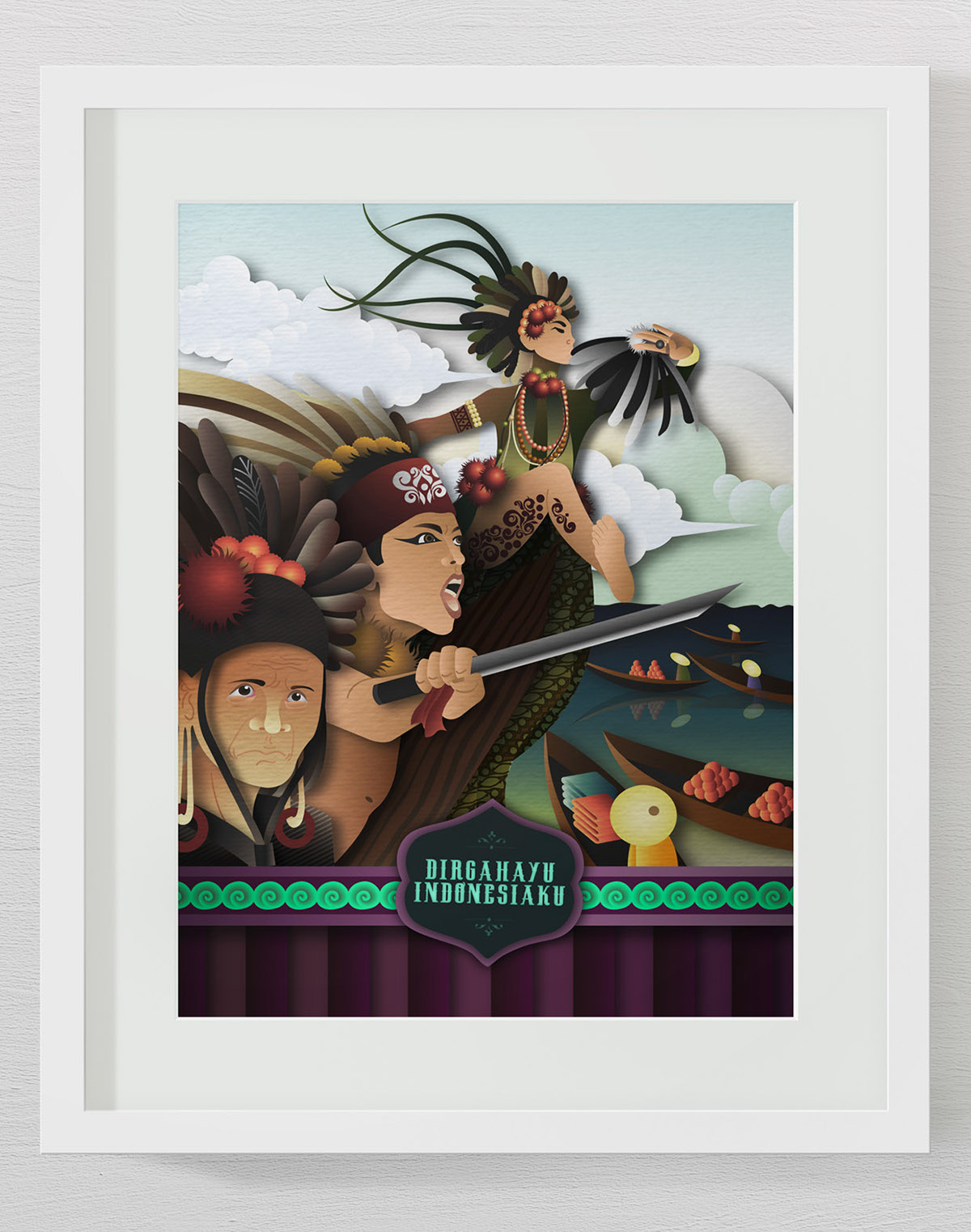
Dayak Culture
Floating Market
Muara Kuin Floating Market is a traditional market which is above the river at the mouth of the Barito river Kuin, Banjarmasin, South Kalimantan (Borneo) . Merchants and buyers use djoekoeng, boats in a language called Banjar. This market began after the Fajr prayer until after 7 o’clock in the morning. Sunrise reflected light between the transaction vegetables and fruit of the vineyard of the villages along the Barito river tributaries and children.
With a view to see, tourists as though they were sightseeing. A small boat which usually called jukung bring merchandise with vegetables, fruits, all kinds of fish and other household goods available at the floating market. As the sun began to emerge the market gradually began to retreat, the merchants began to leave the floating market to bring the results with satisfaction.
Floating market a unique atmosphere and the typical jostling between large and small boat buyers and sellers seek each other are always milling to and fro, and always shaky play of the Barito river waves. Floating market has no such organization in the market on the mainland, so it does not record how many traders and merchants based on visitors or distribution of merchandise.
Boating women traders who sell their products themselves or a neighbor called the hamlet, while the second hand purchase from the hamlet called panyambangan for resale. The Special of this market is still common barter transactions between merchants and boating, which is in a language called Banjar bapanduk, something unique and rare.
Dayaks of West Kalimantan has been inhabited since thousands of years ago and consists of 350 sub-tribes. Dayak is now estimated migrants from Yunnan (China Eastern) is a major migration around 3500-3000 BC and arrived in the archipelago, including in West Kalimantan.
Dayak is still considered animists who worship trees and boulders. They are religion and like to be friends with anyone. Their religious activity is also evidenced by the maintenance of respect or natural or living environment. Nature is seen as a shared house that provides all the needs of human life and other living creatures.
----
Dayak is still considered animists who worship trees and boulders. They are religion and like to be friends with anyone. Their religious activity is also evidenced by the maintenance of respect or natural or living environment. Nature is seen as a shared house that provides all the needs of human life and other living creatures.
----
Floating Market
Muara Kuin Floating Market is a traditional market which is above the river at the mouth of the Barito river Kuin, Banjarmasin, South Kalimantan (Borneo) . Merchants and buyers use djoekoeng, boats in a language called Banjar. This market began after the Fajr prayer until after 7 o’clock in the morning. Sunrise reflected light between the transaction vegetables and fruit of the vineyard of the villages along the Barito river tributaries and children.
With a view to see, tourists as though they were sightseeing. A small boat which usually called jukung bring merchandise with vegetables, fruits, all kinds of fish and other household goods available at the floating market. As the sun began to emerge the market gradually began to retreat, the merchants began to leave the floating market to bring the results with satisfaction.
Floating market a unique atmosphere and the typical jostling between large and small boat buyers and sellers seek each other are always milling to and fro, and always shaky play of the Barito river waves. Floating market has no such organization in the market on the mainland, so it does not record how many traders and merchants based on visitors or distribution of merchandise.
Boating women traders who sell their products themselves or a neighbor called the hamlet, while the second hand purchase from the hamlet called panyambangan for resale. The Special of this market is still common barter transactions between merchants and boating, which is in a language called Banjar bapanduk, something unique and rare.
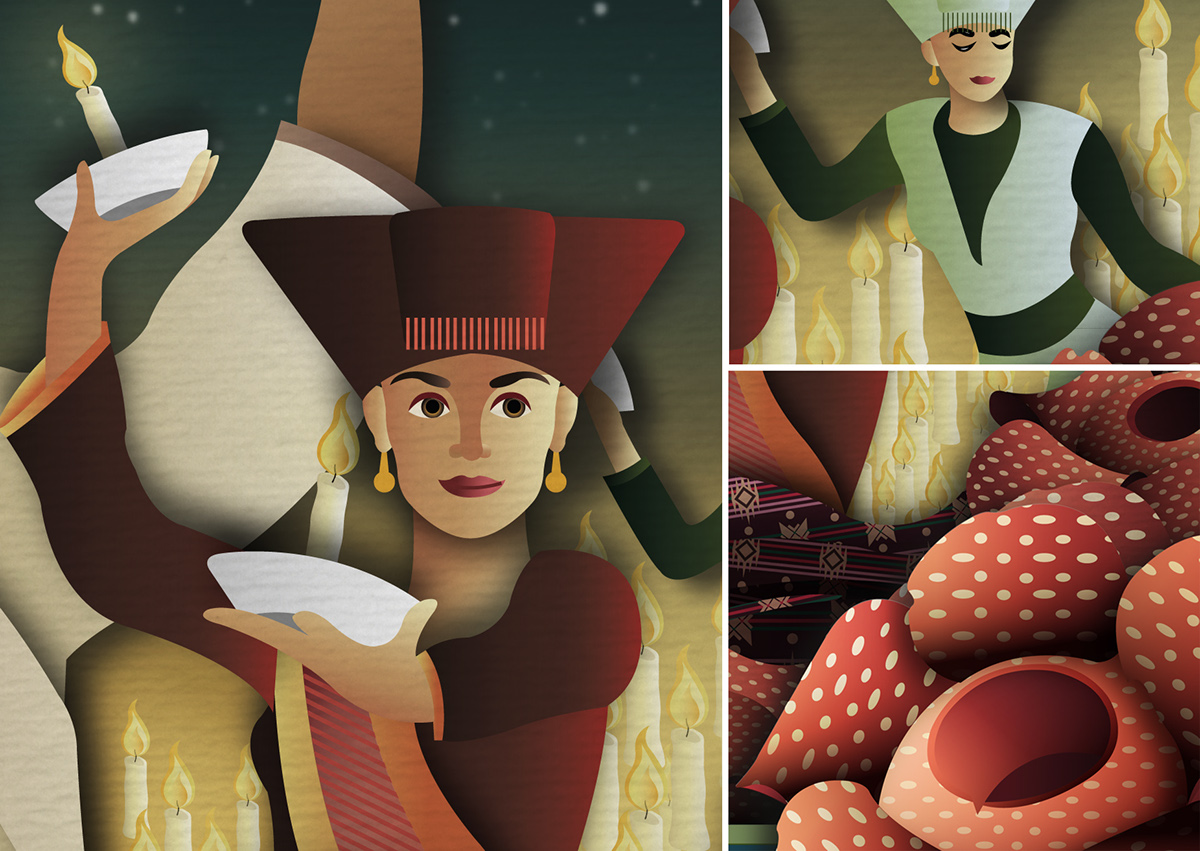
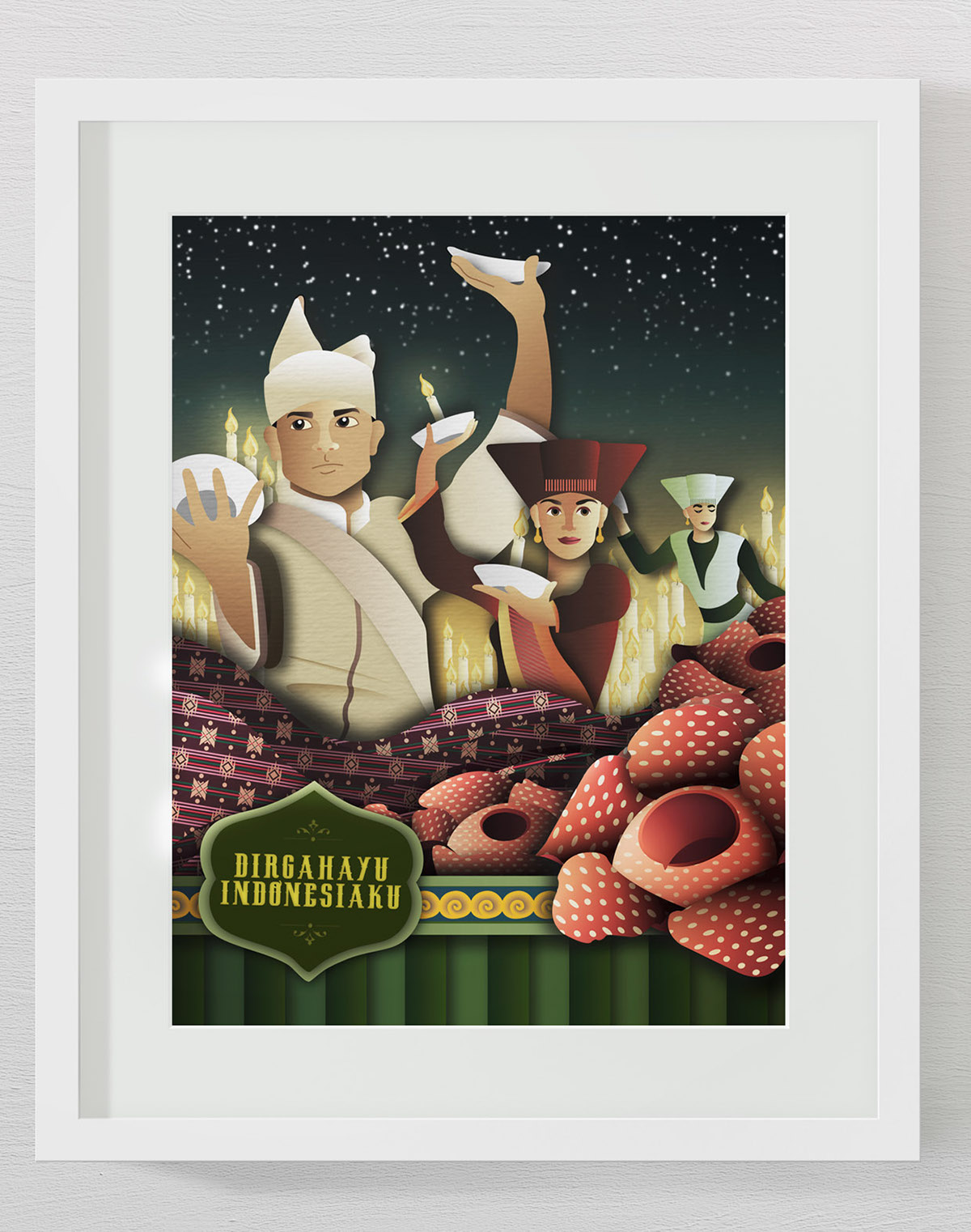
Tari Piring (Plates Dance)
Originated in a town called Solok in the province of West Sumatra, Tari Piring is one of the most enchanting traditional dances of Indonesia. Piriang, as it is called in its original Minangkabau language,symbolizes the farmer’s joy for a successful harvest.
Tari Piring literally means plate (piring) dance (tari). It is the cultural dance of the Minangkabau people, influenced by the late Pagaruyung Kingdom, which ruled West Sumatra in the 14th century.
The dance ritual was originally performed by young ladies and men carrying food on the plates, to give thanks to the God for a successful harvest. Nowadays, this fast tempo dance is performed with dancers with only plates on each of their hands.
Depending on the choreography, the plates would sometimes be thrown into the air and the dancers will let them hit the ground to be broken into pieces. The dancers would then, without fear, step or jump or even roll around the broken glass without injuring themselves. This action of people leaping into piles of broken glass is considered to be the magic of Tari Piring.
Depending on the purpose of performing this dance, Tari Piring can have many different variations. These days, it is performed on public events, such as wedding parties, cultural events, etc. Some of thewell-known variations include Tupai Bagaluik (the moving raccoon), bagalombang (waving/curling), andaka malikik.
Throughout the performance, the dance is accompanied by traditional Minangkabau music, such astalempong (similar to the Javanese gamelan), bansi, puput, salung (a flute that is usually made from bamboo, reed or rice stalks), etc. The music starts off slow and soft but it gets faster with time. The music is a crucial element in Tari Piring since it directs the dancers to move in a certain way.
Originated in a town called Solok in the province of West Sumatra, Tari Piring is one of the most enchanting traditional dances of Indonesia. Piriang, as it is called in its original Minangkabau language,symbolizes the farmer’s joy for a successful harvest.
Tari Piring literally means plate (piring) dance (tari). It is the cultural dance of the Minangkabau people, influenced by the late Pagaruyung Kingdom, which ruled West Sumatra in the 14th century.
The dance ritual was originally performed by young ladies and men carrying food on the plates, to give thanks to the God for a successful harvest. Nowadays, this fast tempo dance is performed with dancers with only plates on each of their hands.
Depending on the choreography, the plates would sometimes be thrown into the air and the dancers will let them hit the ground to be broken into pieces. The dancers would then, without fear, step or jump or even roll around the broken glass without injuring themselves. This action of people leaping into piles of broken glass is considered to be the magic of Tari Piring.
Depending on the purpose of performing this dance, Tari Piring can have many different variations. These days, it is performed on public events, such as wedding parties, cultural events, etc. Some of thewell-known variations include Tupai Bagaluik (the moving raccoon), bagalombang (waving/curling), andaka malikik.
Throughout the performance, the dance is accompanied by traditional Minangkabau music, such astalempong (similar to the Javanese gamelan), bansi, puput, salung (a flute that is usually made from bamboo, reed or rice stalks), etc. The music starts off slow and soft but it gets faster with time. The music is a crucial element in Tari Piring since it directs the dancers to move in a certain way.


